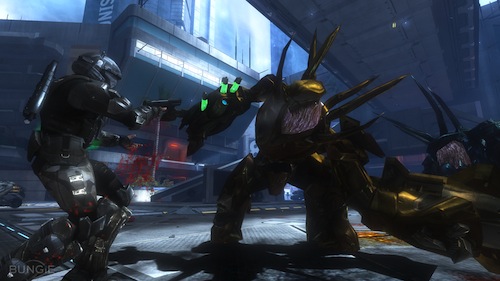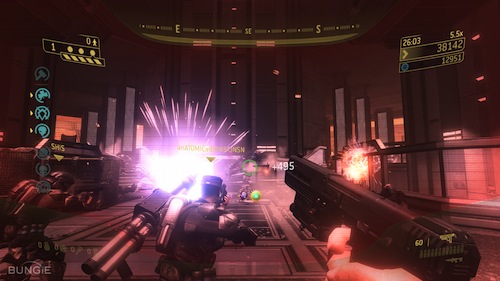
Microsoft is set to kick off the annual videogame blockbuster season with the release of Halo 3: ODST on September 22. The first of the big games scheduled for the busy fourth quarter of the year, Halo 3 ODST is expected to be one of the best sellers of 2009.
Halo 3: ODST is not quite a full sequel to 2007’s Halo 3, which sold in excess of 10m copies. Instead, it gives hungry fans a short campaign and a co-operative firefight mode to bridge the gap until the launch of the real sequel, Halo Reach, in late 2010.
Rather than taking the role of Spartan super-soldier, Master Chief, you spend most of the ODST campaign in the boots of a slower and more fragile Orbital Drop Shock Trooper. In practice, the game doesn’t depart too radically from the traditional Halo formula, as I discovered in a recent hands-on session at Microsoft SA’s offices.
The ODSTs are not as tough as the Spartans with their high-tech armour. But as the first troopers deployed into hostile situations, they’re more than capable fighters in the war against the Covenant aliens. The ODST trooper can’t move as fast, jump as high, or survive a freefall from a great height like Master Chief can.
He also has a health bar that can be chipped away by too much gunfire, meaning that you can’t rush into combat as recklessly as you would as Master Chief with his rechargeable energy shields. Yet the combat, weapons and enemies are all instantly familiar to anyone who has played a Halo game before, with only some minor tweaks.
ODST is based on a slightly enhanced version of the Halo 3 engine, which is starting to show its age. Though the visuals are serviceable, they don’t compare to the benchmarks set for single-player shooters by games such as Gears of War 2 and Killzone 2.
The aesthetics — at least in the early part of the game that I saw — break away from the bold, colourful visuals of earlier Halo games in favour of dimmer lighting and a more muted palette of colours. Indeed, so many areas of the game are shrouded in darkness that you spend much of your time seeing the game through its night vision mode.

Developer Bungie has aimed for a science-fiction noir look-and-feel with an eerily quiet setting in the city of New Mombasa and a low-key jazzy soundtrack rather than the stridently epic score of other Halo games. In line with this noirish theme, the game plays out as a detective story about ODST troopers trying to piece together the happenings that led to the disappearance of their team mates.
The presentation of the story is top-notch. As usual, Bungie has recruited geeky favourites such as Firefly actors Nathan Fillion, Adam Baldwin and Alan Tudyk to provide the voices for the game.
Early international reviews have praised the pacing and storytelling in the campaign, but have criticised its length. Microsoft SA’s Xbox 360 product manager, John Press, says that the campaign will last most players between eight and 12 hours.
Some longevity is added to ODST by a range of difficulty levels, skulls that can be unlocked to effect challenging changes to the gameplay, and a cooperative Firefight mode, which tasks players with surviving increasingly intense waves of enemies.
The ODST package includes a second DVD containing the entire Halo 3 multiplayer mode, including the downloadable map packs released subsequent to the game’s launch. In addition, gamers who buy ODST will be able to take part in the Halo Reach multiplayer beta next year.
Halo 3’s variety of gameplay modes, excellent community features, and customisation options have made it a firm favourite among fans of multiplayer shooters. But the lack of official support for the Xbox Live online gaming service in SA means that most local players won’t get to experience the best side of the franchise. — Lance Harris, TechCentral

